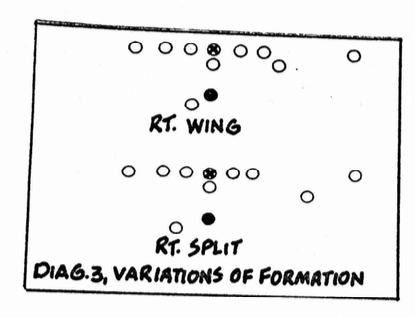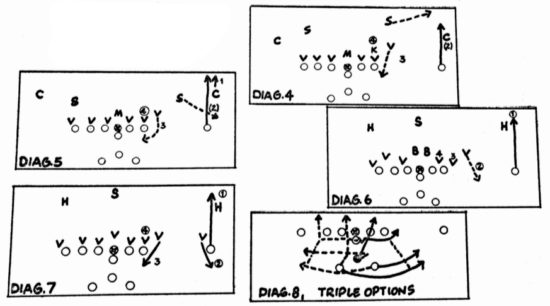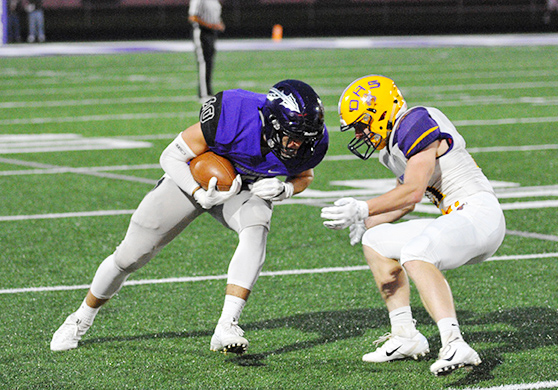Coach & A.D. throwback: Barry Switzer and the wishbone offense

Coach & Athletic Director is in its 88th year of production. Over that time, we’ve had the pleasure of working with legendary coaches across all sports to help share their knowledge.
To celebrate another year educating thousands of coaches and athletic administrators across the world, we thought we’d take a look back and share some material from our archives. One of our football clinics in the early 1970s featured speakers like John Madden, Lou Holtz, Paul ‘Bear’ Bryant and College Football Hall of Famer Barry Switzer.Switzer won three national championships at Oklahoma and led the Dallas Cowboys to a Super Bowl championship in 1996. Switzer’s used the wishbone to create one of the most prolific offenses in college football history. At the clinic, he spoke about the wishbone and its effectiveness.
Here are Switzer’s notes from the clinic:
To win consistently, you must run the football and run it well. We rushed for an average 472 yards a game.
Characteristics of the wishbone
- It is a four back offense; all four backs are in a position to run with the football.
- It has a good power structure, particularly to the tight end side.
- It has simplicity. We have four primary running plays: The triple option, the halfback counter, the counter option and the inside belly. This kind of simplicity gives us the opportunity to repeat and repeat until we get proper execution. Because of the few number of plays, we can practice to meet all types of defenses.
- It is a mirror offense. The split end and the tight end are the only people who flip flop. It poses a constant threat to both sides of the defense.
- It is a total offense; we use the same plays from goal line to goal line. We do not have to develop a special or new offense for different field positions.
- It has a constant game plan; we use the same plays from week to week. We practice our assignments versus our new opponent’s defense.
- It has great passing potential:
- Because of single coverage on our split end.
- Because of the opponents’ concern about our running game, the run-pass options create problems for the defense.
The foundation of our offense is the triple option. If the triple is properly executed, we have built-in automatics after the ball is snapped. The quarterback either hands-off to the fullback, keeps it or pitches to the trailing halfback. The success of this play lies with the ability of the quarterback to make the proper decision.

 For us to be successful, our line must create a crease for our fullback and isolate the hand-off key (DIAGRAM 1). In our formation, the guard is 2 feet from the center and the tackle is 3 feet from the guard. The tight end is 3 feet from the tackle and the split end is 8 to 12 yards from the tackle. Our fullback is 4 ½ yards from the center and our halfbacks 5 yards. We number our line from right to left, one through nine. Split end goes to side of call; tight end away from call. This is shown in DIAGRAM 2. We are in this formation 95% of the time. We wing, split and spread when we are behind. DIAGRAM 3 shows these variations.
For us to be successful, our line must create a crease for our fullback and isolate the hand-off key (DIAGRAM 1). In our formation, the guard is 2 feet from the center and the tackle is 3 feet from the guard. The tight end is 3 feet from the tackle and the split end is 8 to 12 yards from the tackle. Our fullback is 4 ½ yards from the center and our halfbacks 5 yards. We number our line from right to left, one through nine. Split end goes to side of call; tight end away from call. This is shown in DIAGRAM 2. We are in this formation 95% of the time. We wing, split and spread when we are behind. DIAGRAM 3 shows these variations.
» RELATED: Paul ‘Bear’ Bryant discusses philosophy and the wishbone offense
Our teen series is our veer series-triple option:
- 14-16: Base play
- 11-19: Option
- 13-17: True triple
We study the various defensive structures with our quarterback. We discuss the following:
- Drive one of the key defenders deep, making it difficult for him to be responsible for the pass and the pitch at the same time. We call him No. 1.
- Following this reasoning, the next man from the outside would be the man responsible for the pitch. We call him No. 2.
- The next man from the outside will be responsible for the quarterback.
- The next man from the outside will be responsible for the fullback.
These possibilities are showing in DIAGRAMS 4-7. Once the ball is snapped, the triple option is committed to one side. In order to maintain balance, we have our counter option series. DIAGRAM 8 shows how we can threaten all points the line of scrimmage.
In our base play, it is man-on-man blocking, as shown in DIAGRAMS 9-10. Our true triple is shown in DIAGRAM 11.
The 20 series is our belly series, (24-26) show in DIAGRAM 12. Our 23-27 is an option (DIAGRAM 13).
The 30 series is our pass series off the triple option (DIAGRAM 14). Our 40 series is our counter and counter option shown in DIAGRAMS 15-16.
In conclusion, our total objective on the option series is to create a crease for our fullback and isolate the hand off key. The most yardage our fullback made was on the predetermined call. Our line rules are as follows:
- Center: Block O or playside gap or backside linebacker.
- OT: Block first man head up to inside, on or off the line of scrimmage
- OG: Block first down lineman
- Offside: Fill – wall.







